













Raffaello Caverni is born on the 12th March at San Quirico di Montelupo, the son of Vincenzo and Assunta Mancioli, the fourth of ten children.
He becomes an aspirant priest in Florence Cathedral before enrolling at the Collegio Eugeniano, and then at the Scuole Pie of San Giovannino, where his teachers included Fathers Celestino Zini, Filippo Cecchi, Eugenio Barsanti and Giovanni Antonelli. As well as philosophy, physics and mathematics, he studies astronomy at the Osservatorio Ximeniano and chemistry at the Istituto tecnico.
After completing his studies, Caverni is appointed by the Archbishop of Florence, Giovacchino Limberti, as teacher of philosophy and mathematics at the seminary at Firenzuola.
At Firenzuola, on 2nd June, he is ordained a priest.
Caverni outlines the idea of a new phonograph, which is explained in some Osservazioni on the notes to the Divina commedia written by Niccolò Tommaseo and Giovanni Antonelli. His intention is to dedicate this work to Tommaseo, but Tommaseo turns him down. To start with, Caverni takes offence, but later on he attributes it to an excess of modesty. Filippo Cecchi also praises this invention, although he points out serious problems to its realisation. The project remains on paper only and the Osservazioni unpublished.
Following official approval on 20th May, he is moved to Quarate di Bagno a Ripoli, in the valley of the Ema, as parish priest of the church of San Bartolomeo. The post had been opened up to general competition on 30th December of the previous year, following a dispute between the cousins Niccolò and Giovan Battista Quaratesi, each one convinced that he is the only one entitled to enjoy that patronage.
Caverni starts contributing to the journal “La scuola” of Augusto Alfani (which will later change its title to “L’ateneo”, under the direction of Enrico Alessandri, Costantino Pescatori and Bartolomeo Zandonella), where he publishes in instalments the page entitled Ricreazioni scientifiche, as well as various articles on science in Dante’s work and on the teaching of mathematics, as well as Consigli sopra lo studio delle lettere a un giovinetto.
Sansoni publishes his Problemi naturali di Galileo Galilei e di altri autori della sua scuola.
Caverni gets to know Antonio Favaro, who had contacted him for information on the book that highlights issues arising from Galileo’s writings that Caverni had published the year before.
De’ nuovi studi della filosofia: discorsi di Raffaello Caverni a un giovane studente, is printed as a book by the Tipografia Carnesecchi. This work had already been published in instalments in earlier years in the “Rivista universale” under the title Sulla filosofia delle scienze naturali, and in it Caverni ventures a reconciliation between evolutionist theories and Catholic doctrine, accusing theologians – with particular severity towards the Jesuits – of unduly obstructing the progress of science.
● “Civiltà Cattolica” prints a critical review of the work De’ nuovi studi della filosofia by the Jesuit Francesco Salis-Seewis.
● The Tipografia Il Giusti prints Voci e modi nella Divina Commedia dell'uso popolare toscano, a short glossary compiled by Raffaello Caverni.
● De’ nuovi studi della filosofia is put on the list of banned publications by the decree of 1st July. In a letter to Eugenio Cecconi, the Archbishop of Florence, Raffaello Caverni submits to the decision of the Sacred Congregation.
● After becoming acquainted with Prince Baldassarre Boncompagni Ludovisi, thanks to the good offices of Antonio Favaro, Caverni publishes in the «Bullettino di bibliografia e di storia delle scienze matematiche e fisiche» some Notizie storiche intorno all'invenzione del termometro.
● He starts to write for the journal “Letture di famiglia”, founded by Pietro Thouar and then edited by Filippo Orlando, in which he will later publish many articles in various series: Fisica dantesca, Problemi di astronomia dantesca, Da Dante a Galileo and Diporti filologici.
Under the imprint of “la direzione delle Letture di famiglia” Caverni brings together, with the title Dell’arte dello scrivere: consigli di Raffaello Caverni a un giovinetto, a number of writings that had already appeared in the journal “L’ateneo”.
The Istituto veneto di scienze, lettere ed arti announces the Tomasoni competition, with a prize of 5,000 lire to be used to finance the printing of the best work on the history of the experimental method in Italy. Since there is no agreement on the winner within the established time limit, the deadline is postponed to 1889.
Raffaello Caverni publishes Dell’antichità dell’uomo secondo la scienza moderna: saggio di studi, printed by M. Cellini e C., a collection of writings that had already appeared in the “Rassegna nazionale”.
● The publishing house of the “Letture di famiglia” produces in one volume entitled Ricreazioni scientifiche all the articles that had already appeared in instalments in the series with the same title in the journals “La scuola”, “L’ateneo” and “Letture di Famiglia”.
● The article entitled Intorno ad una nuova edizione delle opere di Galileo appears in the “Atti dell’Istituto veneto di scienze, lettere ed arti”. In it Antonio Favaro gives details of the project dating back to November 1881.
Antonio Favaro invites Raffaello Caverni to join the project for a new edition of the works of Galileo and asks him to provide a commentary for the texts and to edit Galileo’s writings De motu.
● Caverni publishes in the series “Biblioteca delle giovanette” of Le Monnier L’estate in montagna: lezioni di fisica. This will be followed by a second revised edition in 1885 and a third revised edition in 1899.
● Successori Le Monnier, the company that was originally expected to publish the national edition of the works of Galileo (which, instead, is published years later by Barbèra) starts to involve the Ministry of Education in the project, in an attempt to obtain royal patronage, and proposes that Antonio Favaro and Raffaello Caverni should be appointed as scientific editors, with Isidoro Del Lungo responsible for the philological part.
● Le Monnier publishes, again as part of the series “Biblioteca delle giovanette”, Fra il verde e i fiori: nozioni di botanica, illustrated with 32 engravings. A second edition is published in 1900.
● After occasional writings for the journal “Cordelia” of Ida Baccini (1885), Raffaello Caverni starts contributing to the Turin journal “Letture per le giovinette”, edited by Countess Irene della Rocca Castiglione. For this journal he will write a number of popular scientific articles: Un ciurmatore del secolo XVII, In pian di Giullari, Sal gemma (1886); Chiocchi di frusta, Razzi di fuoco, Mondo di pietra (1887); Colombe a volo, Giardino di rose (1888); L’esame della signorina Merope (1889).
● Urged by Antonio Favaro, Caverni starts writing his Storia del metodo sperimentale in Italia, with the intention of entering it in the Tomasoni competition organised by the Istituto Veneto.
● On 20th February a royal decree is issued that places the new edition of Galileo under the aegis of the Ministry of Education, with the costs to be paid by the State. Angelo Genocchi, Gilberto Govi and Giovanni Virginio Schiaparelli are appointed scientific editors.
● On reading an article that appears in April in “La Nazione”, written by Niccolò Nobili but not signed, Raffaello Caverni learns that he is no longer in the list of scientific editors of the national edition of the works of Galileo. He will never know that, in addition to a decision by the Ministry not to provide a commentary for the new edition, his name had been vetoed by Gilberto Govi. At this point, relations with Antonio Favaro, whom he blames for what had happened, start to cool and Caverni will also gradually cease to co-operate with him in the preparation of Galileo’s writings De motu.
To the series “Biblioteca scolastica”, published by Felice Paggi, Caverni contributes Con gli occhi per terra: nozioni intorno alla natura e alle proprietà di alcune sostanze minerali, accompanied by some illustrations by Enrico Mazzanti.
Raffaello Caverni sends to the Istituto veneto di scienze, lettere ed arti the manuscript of his Storia del metodo sperimentale in Italia, consisting of 1632 pages, his entry for the Tomasoni competition.
● On 6th February, as a result of Antonio Favaro speaking in positive terms before the committee of the Tomasoni competition, Caverni’s Storia del metodo sperimentale in Italia wins the 5,000 lire prize advertised by the Istituto veneto di scienze, lettere ed arti.
● In April Caverni signs a contract with the publisher Antonio Civelli, giving him ownership of the first edition of his Storia del metodo sperimentale in Italia, in return for payment of the expenses incurred in its publication.
● In May, under the auspices of His Majesty the King of Italy and published by Barbèra, the first volume of the national edition of the works of Galileo sees the light, edited by Antonio Favaro with the texts prepared by Isidoro Del Lungo.
● Caverni is annoyed both by not being invited to be one of the editors of the national edition of Galileo, and also because of the rule of the Tomasoni competition, which lays down that he could only obtain the prize when his work is actually printed. He finally breaks off relations with Antonio Favaro, relations already much reduced in recent years. He complains about Favaro to the authorities of the Istituto Veneto, accusing him of having written his report for the competition simply on the basis of a summary, which Favaro had requested specifically so as not to have to read all the pages in the manuscript.
● The publisher Civelli issues vol. 1 of Caverni’s Storia del metodo sperimentale in Italia, which includes Relazione della giunta del Regio Istituto Veneto and an introduction, Dell’origine e de’ progressi del metodo sperimentale in Italia, and deals with Principali strumenti del metodo sperimentale.
● Raffaello Caverni becomes an ordinary member of the Accademia dei Georgofili: at their meetings in the years to come he will present two papers: Degli organi e delle funzioni della ruminazione (9th July 1893) and Dell’origine della grandine e delle percosse di lei (16th April 1899).
● Civelli publishes vol. 2 of the Storia del metodo sperimentale in Italia, focused on the Metodo sperimentale applicato alle scienze fisiche.
Civelli publishes vol. 3 of Storia del metodo sperimentale in Italia, focused on the Metodo sperimentale applicato alla storia naturale.
Civelli publishes vol. 4 of Storia del metodo sperimentale in Italia, focused on the Metodo sperimentale applicato alla scienza del moto dei gravi (parte prima)
Civelli publishes vol. 5 of Storia del metodo sperimentale in Italia, focused on the Metodo sperimentale applicato alla scienza del moto dei gravi (parte seconda).
● Raffaello Caverni dies on 30th January, after a short illness, in the presbytery of San Bartolomeo at Quarate, leaving as his universal heirs his brothers and their descendants.
● Civelli publishes posthumously vol. 6 of Storia del metodo sperimentale in Italia. This volume bears the date 1900, but in reality is printed years after Caverni’s death. It is focused on the Metodo sperimentale applicato alla scienza del moto delle acque, but was never completed.

